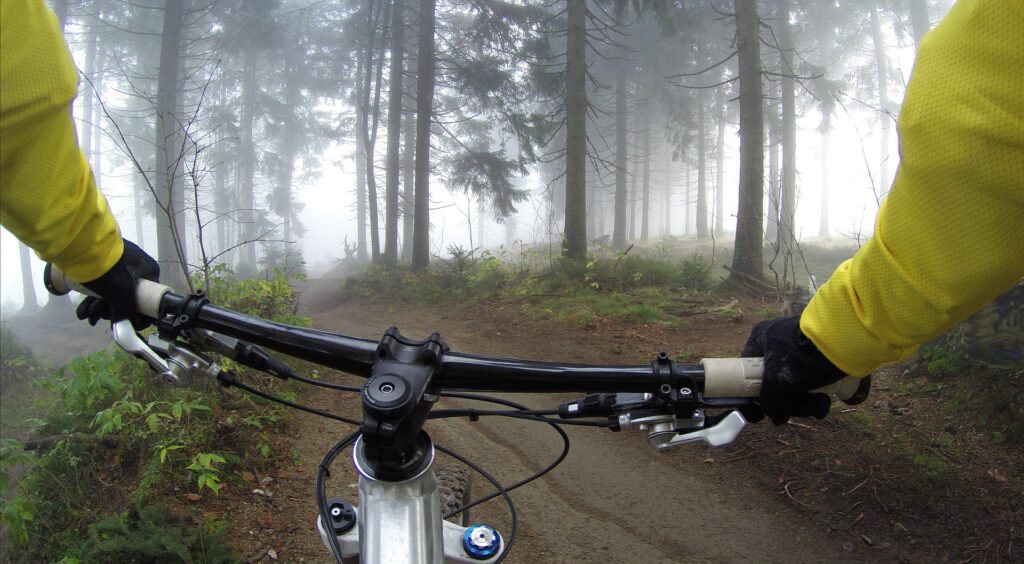Debrecen has much to offer the cyclist, it has an 80+ kilometers bicycle path network, which is being extended by another 22 kilometers of cycle paths.
It is extremely easy to navigate in the city that has very little traffic, good roads, and diverse cycle paths. If you would like to cycle around, you can easily ride to many places both in and out of the city,
Within the city, it’s super easy to get around, we recommended riding to Kossuth Square, which is the heart of the city and then visit the Reformed College Museum to gain a greater understanding of the history of the city and the surrounding area.

You can cycle from Kossuth tér to the adjacent Kálvin tér, continuing on Péterfia utca the road transitions to Simonyi út, note there is a cycle path on the left side of the road. Eventually, this path continues into the Great Forest. In the forest, you can.
Enjoy the beautifully landscaped park area, duck pond, stuffed with goldfish surrounded by the hundreds of years old trees, Cycle through the park on the dedicated cycle path and on to the grand-looking Debrecen University building.
The cycle path connecting Debrecen with Oradea
If you would like to cycle a bit further, you can visit Oradea (Romania) by bike on one day. The first section of the cycle path connecting Debrecen with Oradea, the Tépe-Berettyóújfalu route, will be handed over this summer. Once it is done, only an additional short section will have to be built in the future to connect the two major cities.
An Indoor cycling track is coming
A government has given the go-ahead on the construction of the velodrome (indoor cycling track) in Debrecen, it will be suitable for training and smaller international competitions. The “small” velodrome in eastern Hungary will be built in Debrecen-Pallag, next to the Debrecen Football Academy.
Cycling tour ideas around Debrecen and in the region
If you would like to discover Debrecen and the region, you can choose from several destinations to ride to.
Debrecen – Panoráma út – Vámospércsi út – Debrecen
From Debrecen, you can easily cycle on low-traffic roads along the Panoráma road, which winds through Erdőspuszta, where you can enjoy beautiful forests, clearings, reeds, and lakes instead of the Great Plain. The wildlife, ethnographic and archeological values of Erdőspuszta are presented in the local museum (“Bemutatóház”) of Erdőspuszta. The length of the round trip is 30 km.
Debrecen – Bánk – Létavértes – Kokad – Álmosd – Bagamér – Vámospércs – Debrecen
You can also ride along the 51 km long Bánk – Létavértes – Kokad – Álmosd – Bagamér – Vámospércs line on low-traffic roads and in mostly shady, forest environments. The real gem of the tour is Álmosd, where the army of István Bocskai beat the imperial armies on 15 October 1604. The site of the first victorious battle of the struggle for independence is marked by a monument.
Debrecen – Martinka – Haláp – Hármashegy Recreation Center
The Debrecen – Martinka – Haláp – Hármashegy Recreation Center tour leads to another frequently visited recreation center in Erdőspuszta. The Hármashegy Recreation Center is located in a beautiful forest environment, its topographic conditions do not reflect the picture of the usual Great Plain landscape, with its sand dunes. It is a popular place for hikers. It has a spacious meadow, dense patches of forest, lookout, playground, snack bar which makes relaxation even more pleasant. The Hármashegy Recreation Center is also the terminus of the Zsuzsi railway, which begins in Debrecen. The railway was once designed to transport wood but now serves the needs of tourism. The length of the round trip is 42 km.
Debrecen – Balmazújváros – Kónya (towards Tiszacsege) – Hortobágy – Debrecen
The 2-day tour on the Debrecen – Balmazújváros – Kónya (towards Tiszacsege) – Hortobágy – Debrecen road section guides us to the largest continuous, natural grassy steppe in Europe, the Hortobágy. The country’s first and largest national park (1973) has been a World Heritage Site since 1999 (Unesco). A significant part of it is a biosphere reserve, its wetlands also enjoy international protection under the Ramsar Convention. Diverse landscape due to seemingly endless grassy loess steppes, eye-catching boom wells, saline steppe oak forests, lakes, swampy, marshy areas, and the floodplain forests that accompany the Tisza. Its swamps and fishponds are sites of European importance for bird nesting and migration. The flora and fauna of the area are unique.
We can meet all the native animals of the wilderness (gray cattle, buffalo, Racka sheep, nonius horse, Mangalica) and we can also get acquainted with the folk traditions and crafts that are still alive and thriving (Hortobágy shepherding, former inns, pottery). If you want to stay in the area for more than 2 days, you can get to Lake Tisza from one of the Eurovelo cycle paths running on the Tisza dam or admire the sights of Tiszacsege in the other direction.
Regional cycling developments
In the last ten years, about 1,300 kilometers of new cycling routes have been established in Hungary, so now we have more than 9,000 kilometers of cycling routes. It is planned that by 2020, the entire cycle path network will approach 15,000 kilometers.
One of Hungary’s most spectacular cycling developments in the section between Tiszafüred and Poroszló. With the construction of this last section, Lake Tisza can now be completely circumnavigated. The length of the round trip is around 67 km.
Another great cycling development is the Eger-Egerszalók cycling path, which will be an important part of the EuroVelo 14 route, which was also handed over in June.